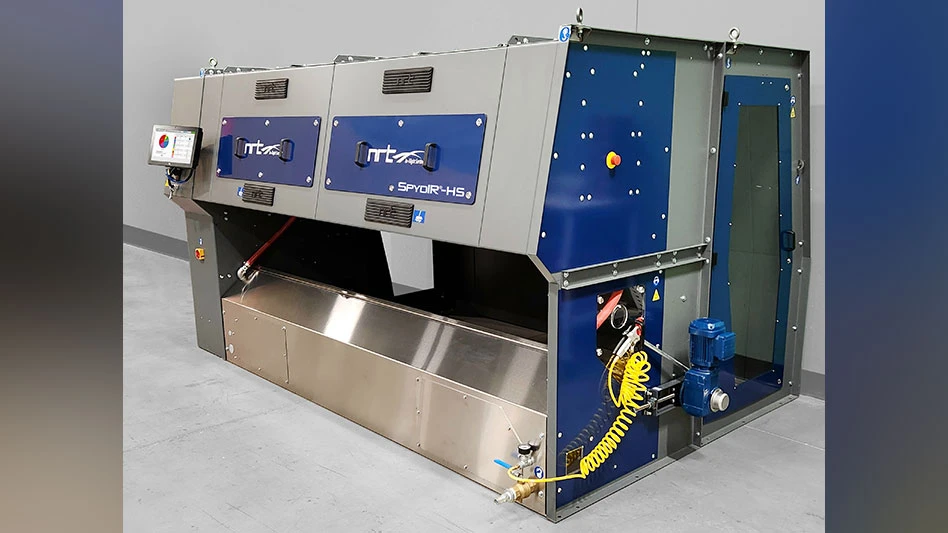
Photo courtesy of NRT
National Recovery Technologies (NRT), the Nashville, Tennessee-based optical sorting subsidiary of Bulk Handling Systems (BHS), Eugene, Oregon, has launched the SpydIR-HS optical sorter, which it describes as a near-infrared (NIR) platform with multiple technological advancements, including nearly 10 times the detection resolution with the addition of a hyperspectral imaging (HSI) camera, double the air ejection precision, integration with the Max-AI VIS (Visual Identification System) and lifetime calibration. The unit also features a new easy-access design for improved maintenance and safety, which is available on all NRT optical sorters.
“We’re excited to bring this ground-breaking optical sorter to the industry,” says Chris Ulum, NRT managing director. “This is more than just an incremental update—the SpydIR-HS combines multiple advancements to boost recovery and reduce contamination.
“With the increased demand for recovered plastics to meet the recycled-content goals of the consumer products industry, the launch of this new optical sorter couldn’t be more timely in light of this urgent challenge.”
“The SpydIR-HS is a culmination of years of research and development focused on improving detection while retaining NRT’s unique technology, including its proprietary In-Flight Sorting,” adds Thomas Brooks, BHS chief technology officer. “In addition, optimized software gives operators greater sorting flexibility, utilizing the full spectrum detection system to set custom thresholds to optimize recovery and for quick target profiling changes.”
The combination of the broad spectral diversity of HSI with NRT’s software algorithms creates an optical sorter calibrated at the factory that doesn’t need routine or auto-calibration, according to NRT. Lifetime calibration is an improvement over NRT’s previous auto-calibration, which the company says was an advancement compared with the manual calibration necessary with other industry optical sorters.
The new sorter can be integrated with Max-AI VIS, adding another layer of intelligence to the high-volume detection system for targeted recovery, Brooks says. The combined unit can eject or suppress polyethylene terephthalate (PET) trays from a PET material stream or eject natural high-density polyethylene (HDPE) containers from a mixed HDPE stream. In addition, the SpydIR-HS can be paired with NRT’s MetalDirector for targeted recovery of metals, the company says.
“The SpydIR-HS is a fundamental building block for the future of autonomous processing,” Brooks adds. “The capabilities of this optical sorter, coupled with Max-AI VIS and BHS’ Total Intelligence Platform, is a huge leap forward.”
NRT says many of the new optical sorter units have been sold and will be installed in multiple systems starting later this spring.
The SpydIR-HS with a Max-AI VIS unit will be on display in the exhibit hall at BHS booth No. 836 at WasteExpo 2023 in New Orleans, May 2-4.
Latest from Recycling Today
- BMW Group, Encory launch 'direct recycling’ of batteries
- Loom Carbon, RTI International partner to scale textile recycling technology
- Goodwill Industries of West Michigan, American Glass Mosaics partner to divert glass from landfill
- CARI forms federal advocacy partnership
- Monthly packaging papers shipments down in November
- STEEL Act aims to enhance trade enforcement to prevent dumping of steel in the US
- San Francisco schools introduce compostable lunch trays
- Aduro graduates from Shell GameChanger program





